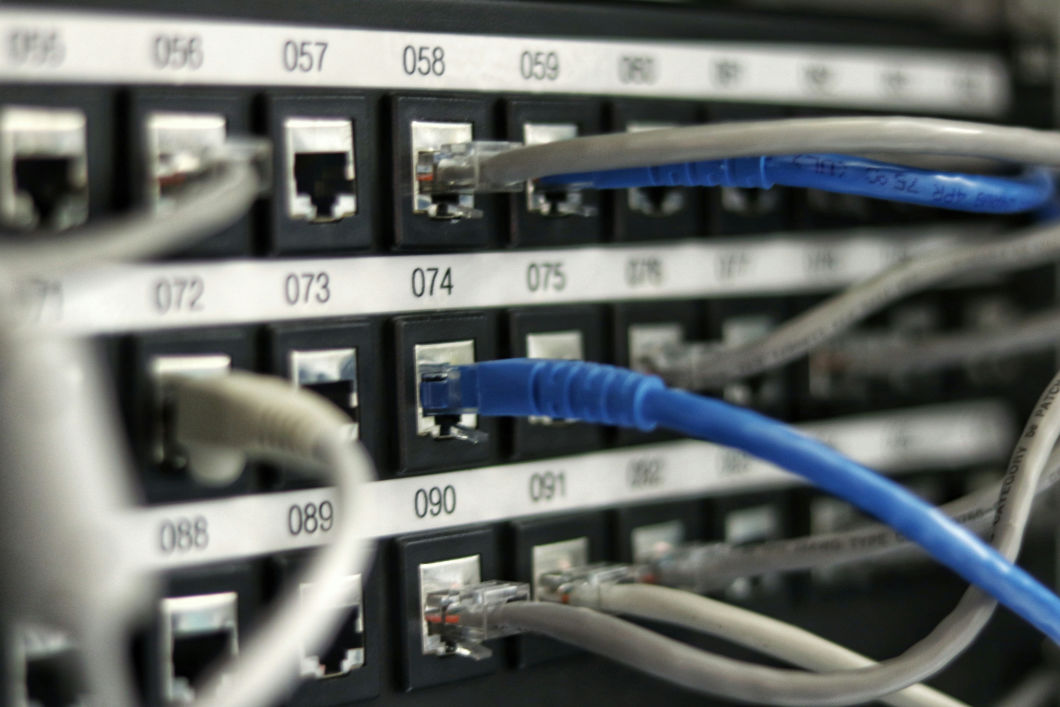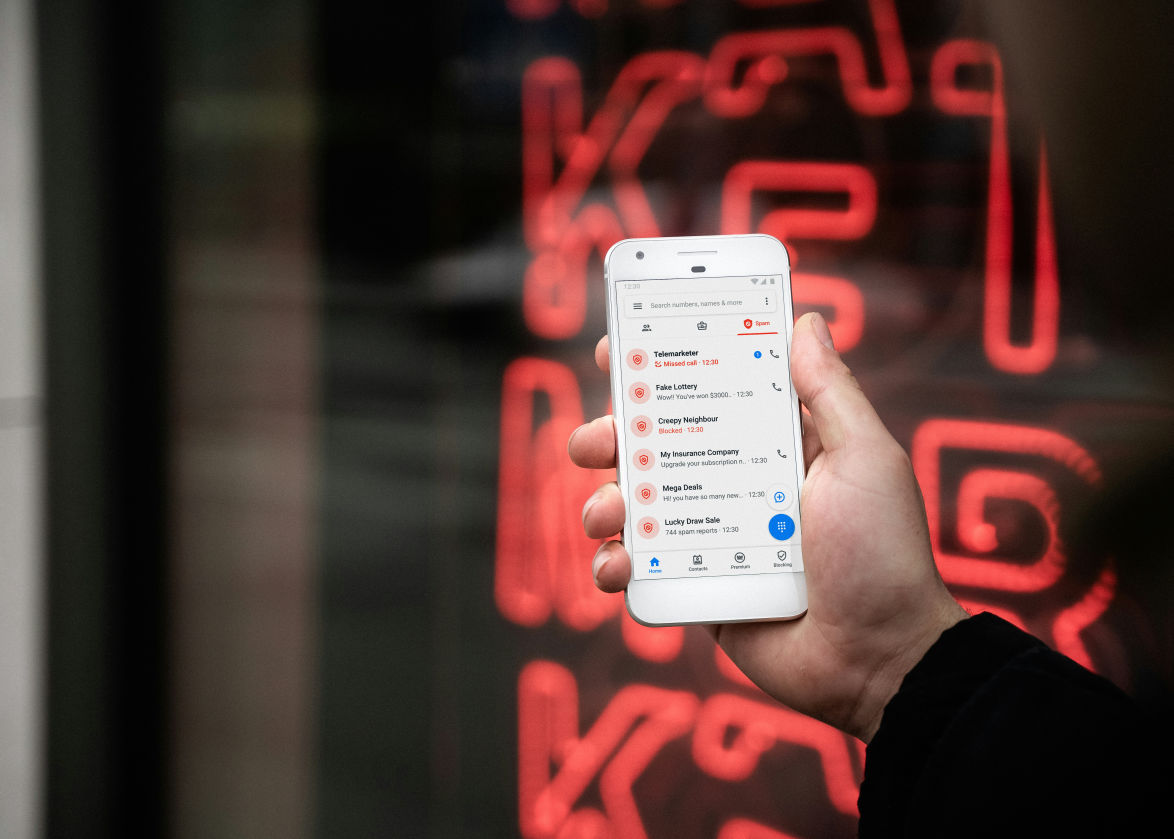Smurf Attack Guide: Prevention & Detection Strategies

A Smurf attack is a cybersecurity threat that falls under the category of Distributed Denial of Service (DDoS) attacks. It operates by exploiting Internet Protocol (IP) and Internet Control Message Protocol (ICMP) vulnerabilities to flood a target with traffic, overwhelming the network and rendering it inaccessible to legitimate users. The attack's distinctive feature is its amplification mechanism, where a small initial query generates a disproportionate response, thereby magnifying the impact on the victim.
In the evolving landscape of cybersecurity threats, understanding the mechanics behind different types of attacks is crucial for prevention and response. Among these, the Smurf attack, a form of Distributed Denial of Service (DDoS), stands out for its unique method of exploiting network vulnerabilities. This comprehensive guide aims to demystify the Smurf attack, tracing its origins and mechanics and offering strategies for mitigation and detection.
Why is it called a Smurf attack?
The name "Smurf" originates from the propagation method of the DDoS attack. In this context, "Smurfing" refers to the malicious practice of using a network's broadcast address to send an overwhelming number of ICMP echo requests (ping) to all devices on the network, with the return address spoofed to that of the target. The imagery of multiplying responses, much like the rapid reproduction of Smurfs in the popular Belgian comic and television franchise, captures the essence of how these attacks amplify their impact.

The History of Smurfing
The concept of Smurfing in cyber attacks dates back to the late 1990s, a period marked by the exploration of internet vulnerabilities and the development of novel exploitation techniques. Initially, Smurf attacks were a revelation, showcasing the potential for relatively simple methodologies to inflict significant disruptions on networks. Over time, as awareness grew and defenses strengthened, the frequency and effectiveness of Smurf attacks have evolved, but the fundamental principles remain a cornerstone in the study of network security.
Is Smurf a DDoS Attack?
Yes, a Smurf attack is a type of Distributed Denial of Service (DDoS) attack. It specifically falls under the category of "amplification" attacks, which leverage the network's own protocols to increase the volume of data directed at the target. By sending a high volume of ICMP echo requests to IP broadcast addresses with a spoofed sender address of the target, attackers can create significant network congestion without needing an extensive network of compromised machines. This makes Smurf attacks a potent tool in the arsenal of cybercriminals seeking to disrupt services and infrastructure.
Explanation of the Denial of Service (DoS) Concept
At its core, a Denial of Service (DoS) attack aims to make a computer resource or network unavailable to its intended users by temporarily or indefinitely disrupting the services of a host connected to the Internet. Unlike other cyber threats that seek unauthorized access to data or systems, DoS attacks focus on rendering the service inoperable. When this strategy is executed from multiple sources against a single target, it becomes a Distributed Denial of Service (DDoS) attack, significantly increasing its potency and mitigation challenge.

What Are the Types of Smurf Attacks?
Smurf attacks, as a subset of the broader category of DDoS threats, is a type of Security Breach which exploit network protocols to overwhelm a target with traffic. However, variations have emerged within this category, each with its methodology and specific focus. Understanding these variations is crucial for network administrators and cybersecurity professionals to develop effective defensive strategies.
Classic Smurf Attack
The classic Smurf attack is the original form of this cyber threat. It utilizes the Internet Control Message Protocol (ICMP) to flood a target with traffic. The attacker sends ICMP echo request packets (pings) to a network's broadcast address, all of which have a spoofed source IP address—that of the victim. When the devices on the receiving network respond to the broadcast, they unwittingly direct a massive amount of reply traffic back to the victim's IP address. The simplicity and effectiveness of this attack stem from its amplification effect; a single request can generate multiple responses, thus magnifying the volume of traffic directed at the victim.
Fraggle Attack
A variation of the Smurf attack, known as the Fraggle attack, employs a similar principle but uses a different protocol. Instead of leveraging ICMP for echo requests, the Fraggle attack uses the User Datagram Protocol (UDP) to achieve its objectives. Attackers send UDP packets to port 7 (Echo) or port 19 (Chargen) of a router or server, with the source address spoofed to that of the target. These ports are chosen because they are designed to respond to any incoming request, thereby creating an amplification effect similar to that of the classic Smurf attack. The Fraggle attack highlights the adaptability of attackers in exploiting different network protocols to achieve the same disruptive ends.
How Does a Smurf DDoS Attack Work?
Understanding the mechanics of a Smurf DDoS attack reveals the intricacies of its operation and the roles played by various components within the network. This section breaks down the process into its fundamental elements.
The Attack Process
A Smurf DDoS attack commences with the attacker seeking to exploit the Internet Control Message Protocol (ICMP), a foundational component of network device communication. ICMP is used for error messages, operational inquiries, and, notably, for echo requests and replies, commonly known as pings. The attack manipulates these pings to flood a victim with overwhelming traffic.
The process is relatively straightforward yet ingeniously malicious. The attacker sends a large number of ICMP echo (ping) requests to a network's broadcast address. These requests are made to appear as if they originated from the intended victim's IP address, a technique known as IP address spoofing. Due to the nature of the broadcast address, the request is amplified and distributed to all hosts in the network, each of which sends an echo reply back to the victim's address. This results in a significant amplification of traffic directed at the unsuspecting victim, potentially leading to network overload and inaccessibility.
The Attack Players: The Hacker, the Intermediary, The Amplifier, The Victim.
The orchestration of a Smurf DDoS attack involves several key players:
- The Hacker: This is the individual or group initiating the attack. Their objective is to disrupt the victim's operations, either for personal gain, to make a statement, or simply to cause havoc.
- The Intermediary: Also known as the "reflector," this component is unwittingly crucial to the attack's execution. It consists of the network devices on the intermediary network that receive the spoofed ICMP requests and, in turn, respond to them. This network acts as the amplifier for the attack.
- The Amplifier: This role is played by the collective of intermediary devices. The nature of ICMP broadcast handling turns these devices into unwitting participants that amplify the initial set of requests.
- The Victim: The target of the attack, typically a server or network, that is flooded with unsolicited traffic, leading to service degradation or complete shutdown.
Malware Creates a Network Package
The initiation of a Smurf attack often involves the deployment of malware by the hacker to automate the creation and distribution of malicious ICMP packets. This malware is designed to generate the spoofed network packages that trigger the amplification process. By infecting one or multiple devices, the attacker can leverage the combined bandwidth to launch a massive flood of ICMP requests toward the intermediary network.
ICMP Ping Messages Are Sent to the Targeted IP Address
Central to the Smurf DDoS attack is the transmission of ICMP ping messages to the broadcast address of the intermediary network, with the source IP spoofed to that of the victim. This action exploits the automatic response mechanism of devices to ICMP requests, causing each device on the intermediary network to send an echo reply to the victim's IP address.
Continuous “Echoes” Bring Down the Network
The culmination of the Smurf attack is the overwhelming flood of echo replies directed at the victim's network. As each device in the intermediary network responds to the spoofed request, the victim receives a disproportionate amount of traffic compared to the initial number of requests sent by the attacker. This deluge of responses, or "echoes," can saturate the victim's bandwidth and resources, leading to a denial of service. The continuous stream of traffic not only disrupts normal operations but can also cause significant downtime, financial loss, and damage to the victim's reputation.
Consequences or Effects on Computer Networks
The infiltration of a Smurf DDoS attack into a computer network brings a series of consequences that extend beyond the immediate target. The sophisticated nature of these attacks, characterized by their ability to exploit the fundamental mechanisms of network communication, can have far-reaching impacts on the operational integrity, service quality, and security posture of affected networks. Below, we explore the various adverse effects that Smurf DDoS attacks can have on computer networks.

Network Congestion
One of the most immediate and visible effects of a Smurf DDoS attack is network congestion. By flooding the network with an excessive volume of ICMP echo requests and responses, the attack significantly increases the load on network resources. This congestion can slow down network performance, causing delays in data transmission and reducing the overall efficiency of network communication. For businesses and services that rely on real-time data exchange, such as financial transactions or live streaming, the impact of network congestion can be particularly severe, leading to lost revenue and diminished user experience.
Resource Exhaustion
Smurf DDoS attacks also lead to resource exhaustion, wherein the network's hardware and software resources are overwhelmed by the attack traffic. Servers, routers, and switches, among other networking equipment, are designed to handle a particular maximum load. An attack that exceeds this capacity can cause these devices to become unresponsive or crash, leading to a denial of service. This exhaustion not only affects the targeted victim but can also degrade the network's performance as a whole, impacting other users and services that rely on the same infrastructure.
Service Disruption
At the heart of a Smurf DDoS attack's objectives is service disruption. By overwhelming the target with unsolicited traffic, the attack can render websites, online platforms, and other digital services inaccessible to legitimate users. This disruption can range from temporary slowdowns to complete outages, depending on the attack's intensity and duration. For organizations that depend on online presence, such as e-commerce sites, the consequences can be particularly devastating, leading to lost sales, customer dissatisfaction, and damage to brand reputation.
Collateral Damage
The distributed nature of Smurf DDoS attacks means that the effects are not confined to the primary target alone. Intermediary networks used as amplifiers in the attack can also experience service degradation, as their resources are unwittingly exploited to facilitate the attack. Furthermore, legitimate traffic traversing these networks may be delayed or dropped, affecting users and services without direct connection to the intended victim. This collateral damage underscores the disruptive potential of Smurf DDoS attacks on the broader internet ecosystem.
Difficulty in Identifying Legitimate Traffic
A particularly insidious aspect of Smurf DDoS attacks is their difficulty distinguishing between legitimate and malicious traffic. Because the attack traffic mimics normal ICMP echo requests and responses, it can be difficult for network administrators and security systems to identify and filter out the attack traffic without impacting genuine users. This difficulty complicates mitigation efforts, often requiring sophisticated detection and response strategies to effectively counter the attack while minimizing false positives and ensuring continuity of service for legitimate users.
How Do You Detect a Smurf Attack?
Detecting a Smurf attack, a sophisticated form of Distributed Denial of Service (DDoS), requires a keen understanding of network behavior under normal conditions and an ability to recognize anomalies that signify potential threats. Given the nature of Smurf attacks—exploiting the Internet Control Message Protocol (ICMP) to flood a target with traffic—it's critical for network administrators and security professionals to be equipped with the proper knowledge and tools. Here, we delve into the signs that can help identify a Smurf attack, thus enabling timely intervention and mitigation.

Signs of a Smurf Attack
Detecting a Smurf attack largely hinges on observing unusual network activity that deviates from the baseline. Recognizing these signs can aid in the early detection and subsequent response to mitigate the attack's impact. Key indicators include:
- Unusual Increase in Network Traffic: A sudden and significant spike in ICMP traffic is a primary indicator of a Smurf attack. Monitoring tools that provide real-time insights into traffic volume can help identify these anomalies. It's particularly suspicious if the spike in ICMP traffic is disproportionate compared to regular traffic patterns.
- Increased Ping Response Times: As the network becomes congested with the flood of echo requests and replies, legitimate ping requests may experience higher than usual response times. This degradation in response times can be an early warning sign of a Smurf attack.
- High Network Latency and Packet Loss: The traffic overload can result in increased latency across the network, as routers and switches struggle to handle the volume of packets. Packet loss may also escalate, with legitimate packets being dropped due to the congestion.
- Alerts from Intrusion Detection Systems (IDS): Many modern IDS solutions are configured to detect unusual patterns of ICMP traffic. Alerts from these systems can provide an early warning of a potential Smurf attack or other types of DDoS attacks.
- Complaints of Service Disruptions or Slowdowns: Often, the first signs of a Smurf attack come from end-users experiencing difficulties accessing services or facing significant slowdowns. While not a technical indicator, user reports can prompt a more thorough investigation into network performance and traffic patterns.
- Discrepancies in Broadcast Traffic: Since Smurf attacks involve the misuse of network broadcast addresses, an unusual increase in broadcast traffic can be a telltale sign. Monitoring tools that can differentiate between types of traffic can be invaluable in spotting these discrepancies.
Prevention and Countermeasures
In the realm of network security, preventing Smurf attacks is paramount to ensuring the integrity and availability of computer networks. Given the disruptive potential of these attacks, organizations must adopt a proactive stance, incorporating technical and educational strategies to safeguard their digital assets. This section outlines comprehensive prevention and countermeasures that can be implemented to mitigate the risk of falling victim to Smurf DDoS attacks.
Educating Network Administrators and Users About Cybersecurity Risks
Awareness and education are key components of any cybersecurity strategy. Training network administrators and employees, to become a Human Firewall, on the risks associated with DDoS attacks, including Smurf attacks, can empower them to recognize potential threats and respond appropriately. Education efforts should cover the importance of secure network practices, the signs of an ongoing attack, and the steps to take in response to suspicious activity.
Strategies to Mitigate the Risk of Smurf Attacks
Mitigating the risk of Smurf attacks involves a multi-faceted approach that combines network configuration adjustments, the deployment of security tools, and the fostering of cybersecurity awareness. Key strategies include:
- Disabling IP-directed Broadcasts: Since Smurf attacks rely on the amplification effect of IP-directed broadcasts, configuring routers and switches to block these broadcasts can significantly reduce the network's vulnerability to such attacks.
- Implementing Ingress Filtering: Ingress filtering is a technique to ensure that incoming packets to a network have a source IP address that matches the expected range for the network segment they arrive on. This can help prevent attackers from spoofing IP addresses, a common tactic in Smurf attacks.
- Rate Limiting ICMP Traffic: By controlling the rate of ICMP traffic allowed through the network, administrators can prevent the type of overwhelming flood characteristic of Smurf attacks. Rate limiting can be configured on routers and firewalls to ensure that ICMP traffic remains within normal parameters.
Network Configuration Best Practices
Adopting network configuration best practices is crucial in fortifying networks against Smurf attacks and other cybersecurity threats. These practices include:
- Regularly Updating and Patching Network Devices: Keeping routers, switches, and firewalls updated with the latest security patches can close vulnerabilities that might be exploited in a Smurf attack.
- Segmenting the Network: Network segmentation divides the more extensive network into smaller, more manageable subnetworks. This can limit the spread and impact of an attack, making it easier to isolate and address.

Implementing Firewall Rules to Block ICMP Traffic
Configuring firewalls to selectively block or filter ICMP traffic can provide a strong line of defense against Smurf attacks. However, it's important to balance security needs with operational requirements, as ICMP can play a legitimate role in network troubleshooting and management. Firewall rules should be tailored to allow necessary ICMP traffic while blocking potentially malicious activity.
Use DDoS Prevention Software
DDoS prevention software and services offer sophisticated mechanisms to detect and mitigate DDoS attacks, including Smurf attacks. These solutions can analyze traffic patterns in real time, identify anomalies that indicate an attack, and automatically take action to mitigate the threat. Investing in such technologies can provide an additional layer of defense, especially for organizations at high risk of DDoS attacks.
Update on Modern Context
Traditional Smurf Attacks Might Be Less Effective, but Attackers Might Adapt
In the evolving landscape of cybersecurity threats, traditional forms of attacks such as the Smurf DDoS have seen a decrease in effectiveness, thanks primarily to heightened awareness and improved defensive measures. Modern network infrastructure is more robust, with many internet service providers (ISPs) and organizations implementing safeguards that directly address the vulnerabilities exploited by such attacks.
However, the adaptability of cyber attackers should not be underestimated. Attackers might also use a combination of tactics to achieve their end goal. For instance, they might use a BadUSB device to compromise a computer system and install malware that turns the system into a botnet node. The compromised computer could then be used to launch a Smurf attack, with the attacker spoofing the victim's IP address to amplify the attack.
As defenses evolve, so do the tactics, techniques, and procedures of those with malicious intent. Attackers continuously refine their methods to bypass security measures, leveraging advanced techniques that can exploit even the smallest of vulnerabilities. This ongoing cat-and-mouse game underscores the need for vigilance and continuous improvement in cybersecurity strategies.
Mitigate the Risk of Smurf DDoS Attacks with RedZone Tech
At RedZone Tech, we understand the complexities of safeguarding digital assets in today's ever-changing threat landscape. Our comprehensive suite of cybersecurity solutions is designed to protect organizations from various cyber threats, including DDoS attacks like the Smurf. By leveraging state-of-the-art technologies and best practices, we provide robust protection to ensure the continuity and integrity of your operations.
Our Virtual Security Operations Center offers 24/7 monitoring and response services, ensuring that any signs of a Smurf attack are quickly identified and mitigated. Additionally, our range of RedZone Products includes advanced DDoS prevention tools that can be tailored to the specific needs of your organization.

Conclusion
While the nature of cyber threats continues to evolve, the importance of implementing comprehensive and adaptive security measures remains constant. Traditional Smurf attacks, though less common in their original form, serve as a reminder of the need for ongoing vigilance in the face of an adaptable adversary. At RedZone Tech, we are committed to providing the tools and expertise necessary to protect against these and other cybersecurity challenges. Our proactive approach to security ensures that your organization can navigate the digital world with confidence.
Our extensive Resources library provides valuable insights and guidance on maintaining a resilient cybersecurity posture. You can also Contact Us for more information on how we can help secure your network against Smurf DDoS attacks and other cybersecurity threats. Our team of experts is ready to assist you in developing a customized security strategy that meets the unique needs of your organization.
Smurf Attack FAQs
Recover From Smurf Attacks
Recovering from a Smurf attack involves several critical steps to ensure the integrity and availability of the network are restored. Initially, identifying and stopping the ongoing attack is paramount. This may involve blocking ICMP traffic or specific IP addresses identified as sources of the malicious traffic. Following the cessation of the attack, a thorough network audit should be conducted to assess any damage or vulnerabilities that were exploited. Updating security protocols, patching any discovered vulnerabilities, and implementing more stringent monitoring measures can help prevent future incidents. Communication with stakeholders is also essential to manage the potential reputational impact and to ensure that measures are taken to fortify the network against future attacks.
Is It Hard to Protect Against Smurf Attack?
Protecting against Smurf attacks is not inherently hard, but it requires a proactive and comprehensive approach to network security. Implementing best practices such as disabling IP-directed broadcasts, configuring ingress filtering, and enabling rate limiting for ICMP traffic can significantly reduce the risk. However, the challenge lies in maintaining vigilance and keeping up with the evolving tactics of attackers. Continuous monitoring, regular updates, and a thorough understanding of the network's normal behavior patterns are essential to an effective defense strategy.
What is a Smurf Attack Amplification Factor?
The amplification factor in a Smurf attack refers to the ratio of the attack traffic volume sent to the volume received by the victim. This is a result of the attacker exploiting the broadcast address to amplify the volume of traffic directed at the victim. For example, if an attacker sends a single ICMP request to a broadcast address that reaches 100 devices, and all those devices respond to the victim's spoofed IP address, the amplification factor would be 100:1. The high amplification factor is what makes Smurf attacks particularly dangerous, as it allows attackers to generate significant traffic volumes from relatively small initial requests.
Does Smurf Attack Use the Technique of IP Spoofing?
Yes, the Smurf attack fundamentally relies on the technique of IP spoofing. In this context, IP spoofing involves the attacker falsifying the source IP address in ICMP packets to make them appear as if they are coming from the victim. This deceit is crucial for the attack's success, as it directs the flood of responses from the network's devices back to the victim's IP address, overwhelming their network with traffic. IP spoofing masks the attacker's identity and exploits the network's response mechanism to amplify the attack, making it both potent and challenging to trace back to the source.
 Security Updates
Security UpdatesUnderstanding IT Compliance: Scope, Benefits, and Challenges
Discover what IT compliance is, its importance, benefits, risks of non-compliance, frameworks, and how to achieve robust IT compliance in your organization.
 Security Updates
Security UpdatesImplement Secure Browsing with Powerful SSL Decryption
Explore the essentials of SSL decryption, its importance, challenges, and best practices for enhancing security and compliance for business in a detailed guide
 Security Updates
Security UpdatesTransitioning from Proxy Firewalls to Endpoint Security
Explore the evolution from proxy firewalls to endpoint security, enhanced threat detection, data encryption, and comprehensive protection for modern networks.
 Security Updates
Security UpdatesExpert IT Risk Assessment: Protect Your Business Today!
Mitigate potential IT threats with our comprehensive risk assessment guide, ensuring your digital infrastructure. Ensure your business is secure an...
 Security Updates
Security UpdatesEssential Guide to Best Practices in Compliance Security
Explore essential strategies for compliance security in this comprehensive guide. Learn about safeguarding your business and meeting regulatory sta...
 Security Updates
Security UpdatesSecure Your Data with Expert Cloud Database Solutions
Learn efficient solutions and secure your cloud databases with encryption and compliance features, ensuring data safety and privacy across all plat...
 Security Updates
Security UpdatesA Guide to Cloud Network Technology: Benefits and Types
Unlock the potential of cloud network technology for seamless connectivity. Learn and scale solutions that drive business innovation and growth via...
 Security Updates
Security UpdatesAffordable Managed IT Services for Small Businesses
Explore top-managed IT services for small businesses to boost efficiency and security. Get expert insights and practical tips to optimize your IT o...
 Security Updates
Security UpdatesSecure Your Network with Gateway Security Solutions
Explore the essentials of gateway security: learn about its importance for network protection and best practices to safeguard your digital assets e...
 Security Updates
Security UpdatesDisaster Recovery Testing: Ensure Business Continuity
Explore effective disaster recovery testing strategies in this guide to maintain business continuity, prevent data loss, and minimize downtime duri...
 Security Updates
Security UpdatesMaximizing Security: Vulnerability Management Lifecycle
Explore the complete guide to the Vulnerability Management Lifecycle to boost your cyber resilience and secure your business IT infrastructure effe...
 Security Updates
Security UpdatesYour Network with Endpoint Security Management
Explore our comprehensive guide on Endpoint Security Management to understand its importance, how it works, and best practices for robust network s...
 Security Updates
Security UpdatesEnsuring Security Compliance: Tips, Insights & Strategies
Discover the essentials of security compliance, its importance, frameworks, and tools. Learn how to protect data and meet regulatory standards effe...
 Security Updates
Security UpdatesBoost Your Security with Internal Penetration Testing
Dive into internal penetration testing with our in-depth guide. Learn the essentials, techniques, and best practices to fortify your cybersecurity ...
 Security Updates
Security UpdatesEgress vs Ingress: A Guide to Data Traffic Management
Understand Egress vs Ingress in data management. Learn and explore their roles, traffic analysis, risks, and best practices for network and cloud s...
 Security Updates
Security UpdatesPrevent Credential Harvesting to Protect Your Precious Data
Understand credential harvesting. Learn how it works, common techniques, its impact, and strategies to prevent and mitigate attacks to secure your ...
 Security Updates
Security UpdatesSecure Your Big Data: Top Solutions for Data Security
Protect your valuable data with our robust big data security solutions. Learn about the threats and Safeguard against cyber threats and ensure comp...
 Security Updates
Security UpdatesSecure Your Network with Advanced Management Solutions
Explore the details of comprehensive network security management: Learn key strategies, best practices, and tools to safeguard your digital environ...
 Security Updates
Security UpdatesGuide to On-Path Attacks: Protecting Your Cybersecurity
Learn about on-path attacks in this comprehensive guide, exploring definitions, types, consequences, and key prevention strategies to safeguard you...
 Security Updates
Security UpdatesExploring Managed Cloud Services: A Comprehensive Guide
Dive into the Managed Cloud Services with our in-depth guide. Explore benefits, types, and best practices to enhance your business's cloud strategy...
 Security Updates
Security UpdatesComprehensive Guide to Ubiquitous Computing: Impact & Future
Explore the details of ubiquitous computing, from its core concepts and layers to its societal impact, key technologies, applications, and future p...
 Security Updates
Security UpdatesClone Phishing Explained: Detection and Prevention Guide
Discover how clone phishing works and its impact. Learn effective strategies to identify, prevent, and respond to these sophisticated email threats...
 Security Updates
Security UpdatesHow to Secure Your Business with Cyber Security Insurance
Explore the essentials of Cyber Security Insurance, covering its importance, types of coverage, benefits, and considerations for businesses in the ...
 Security Updates
Security UpdatesEfficient Data Spooling Solutions For Streamlined Operation
Learn How To Efficiently Manage And Store Your Data With Our Reliable Data Spooling Services. Keep Your Information Organized And Accessible With T...
 Security Updates
Security UpdatesMaximizing Compliance & Risk Management: Expert Strategies
Learn how to ensure business success with effective compliance and risk management strategies. Explore definitions, differences, frameworks, and ch...
 Security Updates
Security UpdatesUnderstanding MDF vs IDF: Key Differences & Benefits
Explore the crucial differences and examples between MDF and IDF in networking, understanding their roles, functions, and impact on network infrast...
 Security Updates
Security UpdatesRedZone Wins CRN's Top Security 100 & MSP 500 Awards 2024
RedZone Technologies earns CRN's Security 100 & MSP 500 Awards, affirming its leadership and innovative approach in the cybersecurity and IT manage...
 Security Updates
Security UpdatesJames Crifasi Speaks on Cybersecurity at Tech Conference
Join James Crifasi, CTO & COO of RedZone Technologies, at the Tech Conference as he explores cybersecurity's role in driving business growth and ad...
 Security Updates
Security UpdatesRedZone's James Crifasi Wins SonicWall's Technical Hero Award
CTO James Crifasi of RedZone Technologies earns SonicWall's Technical Hero of the Year, exemplifying unparalleled dedication to cybersecurity and I...
 Security Updates
Security UpdatesHow to Encrypt Email in Outlook
Learn how to encrypt email in Outlook with our step-by-step guide. Secure your messages using S/MIME, Office 365 Encryption OME, and add-ins for pr...
 Security Updates
Security UpdatesWhat Is Security Monitoring? Importance and Tools
Explore the importance of security monitoring, its key roles, types, and how it protects organizations against threats, ensuring compliance and pro...
 Security Updates
Security UpdatesServer 2012 R2 End of Life: Implications and Next Steps
Learn about Server 2012 R2 end of life: Understand its impact, key dates, risks post-EOL, and explore upgrade options and migration strategies for ...
 Security Updates
Security UpdatesProtect Personal Data: Smishing and Phishing Prevention
Know how to identify and protect against smishing and phishing attacks. Learn the techniques, types, and preventive measures for personal and busin...
 Security Updates
Security UpdatesSmurf Attack Guide: Prevention & Detection Strategies
Explore prevention & recovery from Smurf Attacks: Understand DDoS defense, detection signs, and secure network practices in our detailed cybersecur...
 Security Updates
Security UpdatesWhat is a Bad USB Attack, and How Do You Prevent It?
Learn about Bad USB attacks, their various forms, and strategies for safeguarding devices. Learn how to mitigate risks with effective prevention te...
 Security Updates
Security UpdatesKey Differences Between DOS Attack vs DDOS Attack
Explore the key differences between DDoS vs DoS attacks, their types, impacts, and prevention strategies in our comprehensive guide to enhance cybe...
 Security Updates
Security UpdatesUnderstanding the Impact of a Ping of Death Attack
Explore the ins and outs of Ping of Death attacks. Understand how they work, their impact on networks, and strategies to prevent them to keep your ...
 Security Updates
Security UpdatesThe Power of the Human Firewall: Your First Line of Defense
Discover the critical role of the human firewall in cybersecurity, combining employee vigilance with technology to protect against cyber threats ef...
 Security Updates
Security UpdatesStateful Firewall vs. Stateless Firewalls: What's the Difference?
Learn the key differences between stateful and stateless firewalls and how they protect your network. Discover the right choice for your security n...
 Security Updates
Security UpdatesUnderstanding the 4 Levels of PCI Compliance
Explore PCI DSS Compliance with RedZone: Key steps to protect card data and ensure secure transactions. Learn about compliance levels and tips for ...
 Security Updates
Security UpdatesWhat Is a Security Breach and How to Prevent Them
Learn how to effectively guard your business against security breaches with RedZone Technologies. Discover simple steps to keep your data safe and ...
 Security Updates
Security UpdatesUnderstanding Tailgating in Cybersecurity
Understand tailgating attacks in cybersecurity: what they are, how they work, and effective strategies for prevention to keep your business...
 Security Updates
Security UpdatesWhat is a Managed Service Provider and Its Benefits
Explore the role of Managed Service Providers (MSPs) in enhancing IT efficiency and cybersecurity for businesses, covering benefits, servi...
 Security Updates
Security UpdatesBreach Prevention: 5 Best Practices to Protect Your Data
Learn about data breaches: what they are, their impact, and how to prevent them. Explore best practices for securing your business against cyber th...






